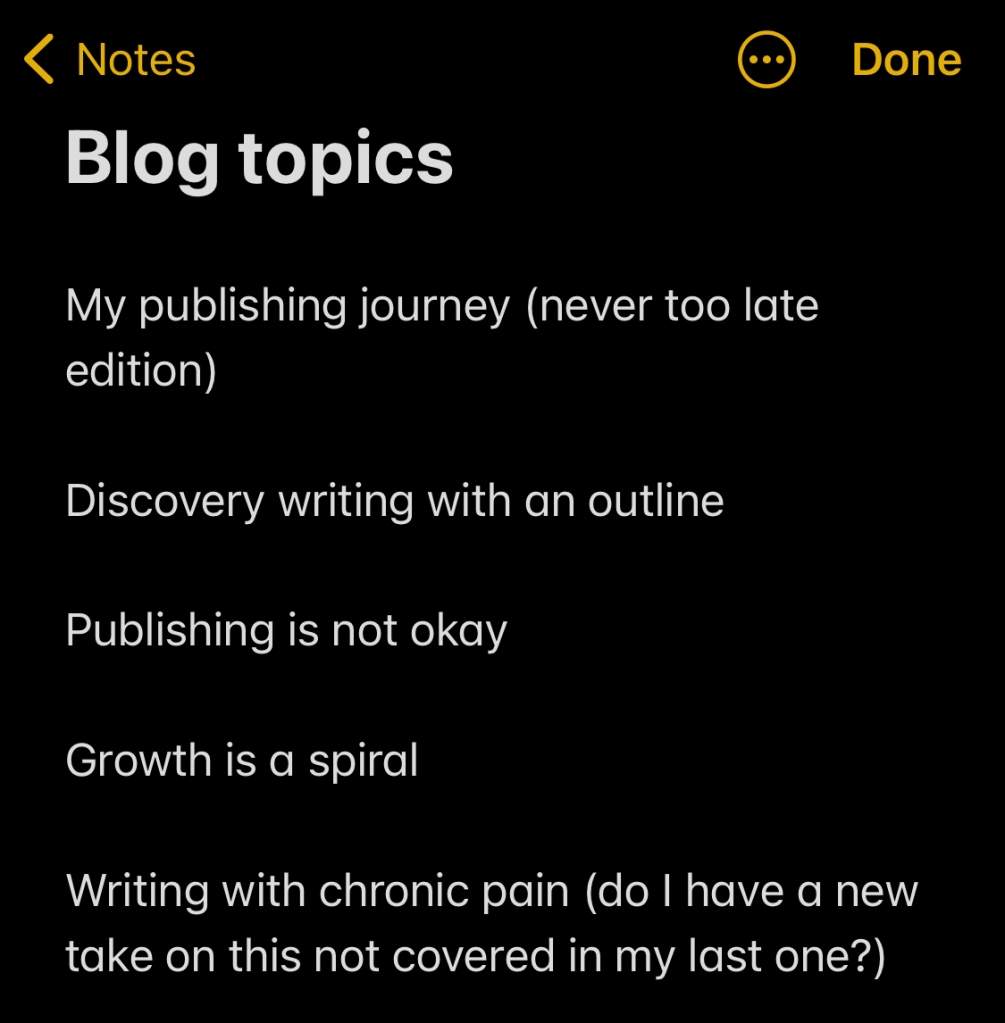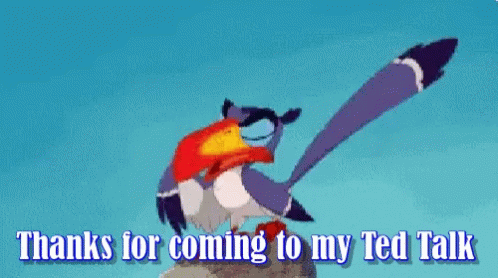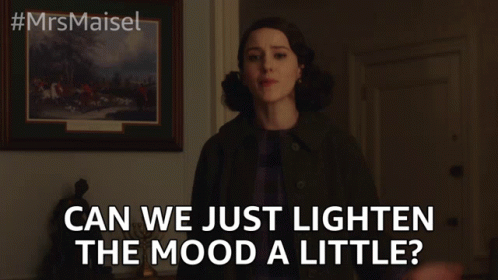It’s no secret that I love blogging. “Live, laugh, longform” has become my unofficial motto for this project, only half-tongue in cheek. When I started this blog, however, I had no idea what I wanted to do with it or how to do it in the first place.
I had tried blogging a few times in the past but had trouble staying consistent. I initially just wanted a place to host my Writer in Motion posts. But over time, it became something more for me: my own little home on the web, one that feels more “mine” than my other platforms, and a rewarding endeavor I enjoy putting time into.
In a time when social media like Twitter and Instagram create an ephemeral experience, controlled by a mysterious algorithm and catering to instant gratification, blogging feels different. It feels old-fashioned. It reminds me of the “good old days” of LiveJournal, where I initially found a semi-public voice, learned how to Be Online, and held forth on any number of topics, from fandom to personal experience to politics.

I left LiveJournal a decade and a half ago after it became a Russian-owned company that threatened its users, but I’m still nostalgic for those communal spaces in their heyday. WordPress doesn’t support interactive community-building quite as well as older social media used to, but it does let me create my own little corner of the internet and customize it to my liking far more than other platforms. It’s especially rewarding to see posts I wrote months ago still get views, indicating that people may find my older work useful or interesting.
With that in mind, today I want to share what I’ve learned about the nuts and bolts of blogging. As I work on consistency this year, I’ve developed a process of sorts, starting with idea generation and going all the way to promo. If you’re thinking of starting a blog, or you want to start posting on your existing blog more regularly, I hope this can provide a jumping off point for developing your own process!
I’ve had this one in the hopper for a while. Yes, I’m still trying to make blogging a thing again.

Step 1: Collect topics of interest.
I like to think of this as the magpie stage. I collect shiny ideas for posts from a variety of sources. Often it comes from my own obsessions, but I also pay attention to what sparks interest and conversation on my other platforms.

Sometimes a post will be inspired by what I’m working on at the time or a craft concept I’m learning. Occasionally some extended metaphor or idea will get stuck in my head that I want to play around with. Other times, current events in the writing community get my gears turning, or I notice people expressing interest in how-to topic I feel equipped to address.
If I go off about something in one of my group chats and feel like I should poke fun at myself at the end by saying “thanks for coming to my TED talk,” that’s a potential blog post topic that comes half-drafted already. At times, I literally copy-paste my own chat logs as a jumping off point for my outline.

For example, the bones of this post were originally shared in one of my Discord channels after another member asked for blogging tips. Similarly, sometimes a topic I address on Twitter calls for further nuance or expansion in longform, such as last week’s post on writer solidarity in response to publishing industry woes.
When I have a few ideas floating around and I’m not sure what to pursue first, I often poll my Twitter followers on what topics they most want to read about. The results frequently surprise me! Although I don’t always follow poll results if I’m seized by inspiration on a particular subject, I will adjust my priorities to work on the ones that generate more interest.
Step 2: Pitch it to myself.
Not all topics I come up with inspire full-length blog posts. If I’m going to write a whole article on something, I need to find my angle. That means coming up with a narrower focus or concept that intrigues me enough for me to invest the writing time.
This isn’t unlike pitching a novel, though it’s simpler. Sometimes my angle is a central point I want to make. It can also be a gimmick, joke, or fun title that grabs me.

The bird example shows how my own peculiar obsessions and passions work their way into my blogging process. Blogging is a lot of work so I figure if I’m at least having some fun with it and amusing myself, it’s worth doing regardless of whether it resonates. But I also find that when I’m passionate and interested in a topic, that comes through and increases my connection with my readers as well.
I like to have an interesting image or metaphor in mind. Sometimes these come later as I write the post, too. I don’t always do these steps exactly in order. Chaos is always an option!

Step 3: Outline in WordPress.
When I have an angle that I find sufficiently interesting or entertaining, I start outlining. I jot down the pitch and the main thoughts I have about it into the WordPress editor. These points usually become headings later.
Each of these main points will typically develop into full sections as I explore my initial ideas. Most weeks, I work on the outlining stage over a few days while marinating on the topic. I also start thinking about how I want to structure the post, for instance, whether it lends itself to a listicle-style article. (People love lists and it makes for an easy title i.e. “Five Things…etc.”)

This is another test stage for ideas. If I can outline like this with three to five main points, the idea I’ve chosen is almost always rich enough to become a whole post. If the outline doesn’t materialize, I sometimes discard post ideas at this stage.
If I decide not to develop an idea, usually I fold whatever I did come up with into a different topic or adapt it as a Twitter thread. This way the work isn’t wasted. It often does come back in a more developed form once I’ve had time to mull on it, too.
Step 4(ish): Make it personal.
Before and while I outline, I often catch myself thinking “I don’t have much to say about this topic.” That is almost never true. I have a lot of thoughts about most things—too many thoughts, probably!

When getting started with blogging, I think most people wonder why anyone will want to read what they have to say. After all, there are many blogs out there. Writers love to write about writing, in particular, so most topics have in fact been addressed before.
If you aren’t sure that you have anything to contribute on a topic, consider this. Even though most topics you pick will not be brand new, your perspective IS unique and people want to know what YOU think about it! Otherwise they wouldn’t be reading your blog.

I personally love to read multiple blogs about topics I’m passionate about by other passionate people. Writing craft, for instance, is extremely personal and subjective, so there is substantial room for different takes on any given topic. Don’t discount your own insight or perspective and how that might benefit someone else down the road who comes upon it.
You don’t have to set out to make your blog the definitive authority on your topic. Your take doesn’t have to be broadly applicable to be valuable. Your personal perspective, experience, and insight is valuable in itself. It can add to a wider conversation in your community and bring a specific viewpoint.
Step 5: Draft the darn thing.
Naturally, this the most time-consuming part of the process. Depending on how much outlining and prep work I’ve already put in, finishing a draft of a blog can take me several hours. I usually work on these on Saturdays, with the goal of publishing the post on Monday. That gives me Sunday to edit and fine-tune before going public.
I want to acknowledge here that I know not everyone uses WordPress, and not everyone who uses it loves working directly in the WordPress interface. The block editor and app work well for my purposes, though. It autosaves and syncs between desktop and mobile, and I do a lot of my initial blog drafting on my phone from my couch.
Depending on the topic, I may also do a fair amount of research in this stage. I read other blogs or articles on the subject, add links, check my facts, and define any jargony terms. I’m not a professional journalist, obviously, but I do try to get it right, cite my sources, and direct my audience to deeper dives for further reading.

Drafting means building out each heading and making sure my thoughts follow a logical path from premise to conclusion. Having a prewritten outline helps me jump around from section to section. At this point (usually toward the end of my drafting process) I also try to develop an engaging introduction and a friendly outro/sign off that invites comments from readers.
Step 6: Polish and illustrate.
Once I have a draft I’m happy with, including an intro and conclusion, I start adding finishing touches. I use gifs, images, quotes, and other media like embedded social posts to break up the text and add interest. This isn’t necessary, but I find it fun, an easy way to lighten the mood on serious subjects and create a conversational tone.

Using the Pexels media library available through WordPress, I pick a “featured image” that will show up under the post title. I tend to spend a lot of time selecting just the right picture that reflects my topic and angle. I have no idea if this matters to my readers, but I’m a visual person, so it matters to me. As a bonus, it sometimes helps me clarify the central theme of the post, and I may even go back and strengthen that theme in the text afterwards.
I also make sure to add alt text to any images I include in the body of the blog. This is a relatively simple step to make sure that everyone, including people using screen readers, can understand the gist of my gif-based jokes (v. important to me! 😅) My blog isn’t perfect as far as accessibility, and I’m still learning how to improve, but it is something I strive for.
In this phase, I think deliberately about my tone and “voice,” and adjust phrasing if I think it might come off wrong. I usually read the full draft over several times, revising and refining. Sometimes I reorder paragraphs or sections to improve the flow of ideas.

Beta reading can help with blog posts as much as any other writing. If I am blogging on a topic that feels fraught or controversial, I may send my draft to a trusted friend before posting. A second set of eyes can help flag any areas where I’m unclear, off base, or missing nuance.
Step 7: Schedule and promote.
When I feel a post is ready for public consumption, I schedule it through WordPress. I post my blogs on Monday mornings between 5-6 AM PST so that it hits most readers’ dashboards first thing. Having a regular schedule helps me stay consistent. I picked Monday because available data suggests it’s the day blogs get the most traffic.
Getting used to promoting your own blog takes time. When I first started blogging, I would just post a link on Twitter, which would get me a few hits and responses, but not much beyond that. Now, however, I am a lot more shameless about promoting my work. I share links everywhere I’m present online, usually Twitter, Facebook, Instagram, and Discord.
Because blogging is work. I started doing it mostly for fun, and I still do it for myself as much as anyone. However, maintaining this platform in a consistent way is also a deliberate investment of time in my writing career and so-called “author brand.”
Blogs are content, content is king, and social media has a short memory. In other words, if you are (let’s say) an author in between book releases, having other content to share on a regular schedule is extremely valuable. It gives people a reason to stay tuned to my channels, it builds connections, and it hopefully gives something back to my audience too.

I even use headshots of myself in my blog promos now, despite wondering every time if people are sick of my damn face. And maybe they are! But experience has taught me that people respond much more readily when they see a human face as opposed to other types of images. I consistently get more views when I use this type of promo, and it’s a good use for the professional portraits I spent a pretty penny on.
All that is to say: don’t fear self-promotion. It can be hard to get in the habit of tooting your own horn, but for better or worse, it’s part of building an online presence. When you share your work in this way, you aren’t forcing people to read it—you’re making it available if they’re interested.
Also, remember that the algorithms on social media don’t show everyone all of your content, so cross-posting and retweeting yourself is giving people more opportunities to see it. Personally, I’m always grateful to see substantive content on my timelines and I know I miss more than I see. So please, promote yourself so readers can find you!
The ones who don’t want to read your work will ignore you either way. 🤷♀️ It’s not about them, though. It’s about reaching the ones who are interested in what you have to say.
Go forth and make longform a thing again!
So, there you have it: how I write a blog post in seven(ish) steps. I’m definitely still fine-tuning my approach, working on finding ways to reduce my time spent and bring more ease. I’ve also learned a lot from other bloggers here and elsewhere. For instance, Stuart Danker has a ton of great posts on how to up your blogging game that have influenced my process (especially recommend this one for a different set of seven steps).
Let me know if this was helpful for you! If you blog, how do you go about writing your posts? If you want to start blogging, what questions or fears do you have about getting into it? Drop me a comment–I’m always happy to answer questions and I love hearing from my readers (it gives me that old LiveJournal feel, lol!)


Oh wow, I’m so honoured to be a part of such a wonderful post, Erin. I’m always a sucker for other writers’ writing processes, and this was a treat. Making things personal is my way of spicing up a topic that’s beaten to death, because no matter how cliche the topic, people can’t be me. Thanks once again!
LikeLiked by 1 person
Of course! Your blogging guides are invaluable to me!
LikeLike